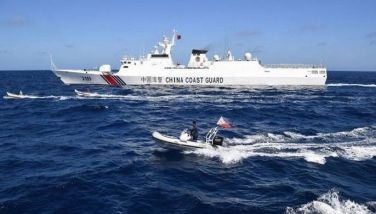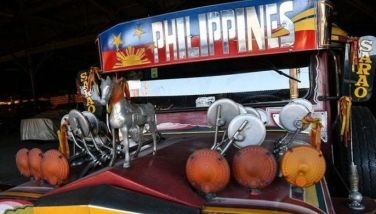DENR to public: Surrender rescued Taal wildlife

MANILA, Philippines — The Department of Environment and Natural Resources (DENR) has appealed to the public to turn over to authorities any rescued endangered and endemic animals from Taal Volcano.
“We are appealing to the public to rescue and turn over to the DENR any wildlife species within the vicinity of Taal Volcano to ensure their safety,” Environment Undersecretary Benny Antiporda said in a statement over the weekend.
Antiporda said endangered and endemic animals within the Taal Volcano Protected Landscape (TVPL) may have migrated to residential communities after the volcano started spewing ash and other hazardous particles since last week.
Antiporda said the animals, which local residents may have unintentionally captured, must be brought to wildlife rehabilitation centers for proper care.
Antiporda made the appeal after he received a rescued rufous hornbill from Cavite Educators Lions Club member and Bacoor City resident Flor Locson. The bird is suspected to have fled from the TVPL.
The rufous hornbill, locally known as kalaw, is a large species of hornbill found only in the Philippines. The animal falls within the “Red List” of the International Union for Conservation of Nature, which means that it is considered a vulnerable species, nearly threatened by extinction.
The DENR warned that eating wildlife or keeping them as pets is against the law.
Meanwhile, environment assistant secretary and concurrent Biodiversity Management Bureau (BMB) director Ricardo Calderon said rescued wildlife from Taal Volcano may be turned over to the DENR field offices in Batangas or in Cavite.
“The DENR field offices in Batangas – Calaca and Lipa – are ready to receive these animals once they are rescued,” Calderon said.
“We have teams from the field offices on site that are helping in rescuing the animals in the peripheries of the area,” he added.
Apart from wildlife species, Calderon said the BMB is also helping in the rescue of domesticated animals. Calderon said the rescued animals are either turned over to the owners or to the local government units in the area.
As to the rescued rufous hornbill, initial checkup shows that it is “generally healthy despite being stressed,” Calderon said.
The hornbill is currently at the BMB’s Wildlife Rescue Center in Quezon City, where it will be rehabilitated before being released into the wild.
“Once the bird recovers, it can be released in the same area (TVPL) once everything is settled or in the Calabarzon area where their species are widespread,” Calderon said.
Sanitary disposal
With many animals killed in areas affected by the volcanic eruption, the Department of Health (DOH) issued an advisory on how the remains should be buried.
For one, the agency said those burying dead animals should wear gloves and a mask when they handle the animal’s carcass. The burial ground should be three to four feet deep and, for mass burials, the depth of the burial ground should be six feet from the last animal buried there.
The agency added that the burial ground must be far from water sources.
Many domestic animals and livestock were left on Taal Volcano island when their owners evacuated due to the eruption a week ago. Efforts by various groups are currently underway to rescue them.
On its website, the Atlanta-based Center for Disease Prevention and Control (CDC) in the US had issued some recommendations on proper animal disposal following an emergency.
According to the CDC, proper hand washing by those involved in the disposal is important to prevent infection with “certain pathogens that may be transmitted from farm animals, including salmonella and E. coli.”
“People working to clean up areas containing swine or poultry carcasses should... wear protective clothing, including waterproof gloves, waterproof boots and protective eyewear” and to cover any open wounds, the agency added.
The CDC recommended the use of duct tape to “seal tops of gloves and boots to prevent water seepage.” It also recommended respiratory protection such as N95 face masks or respirators, adding that if there is a smell of hydrogen sulfide (like a rotten egg smell) one must leave the area.
The agency also advised the public to wash hands and shower and wash hair thoroughly after handling animal carcasses or carcass-contaminated materials. All clothes and boots should be cleaned and disinfected. Wash work clothes separately from street clothes.– With Sheila Crisostomo
- Latest
- Trending





























